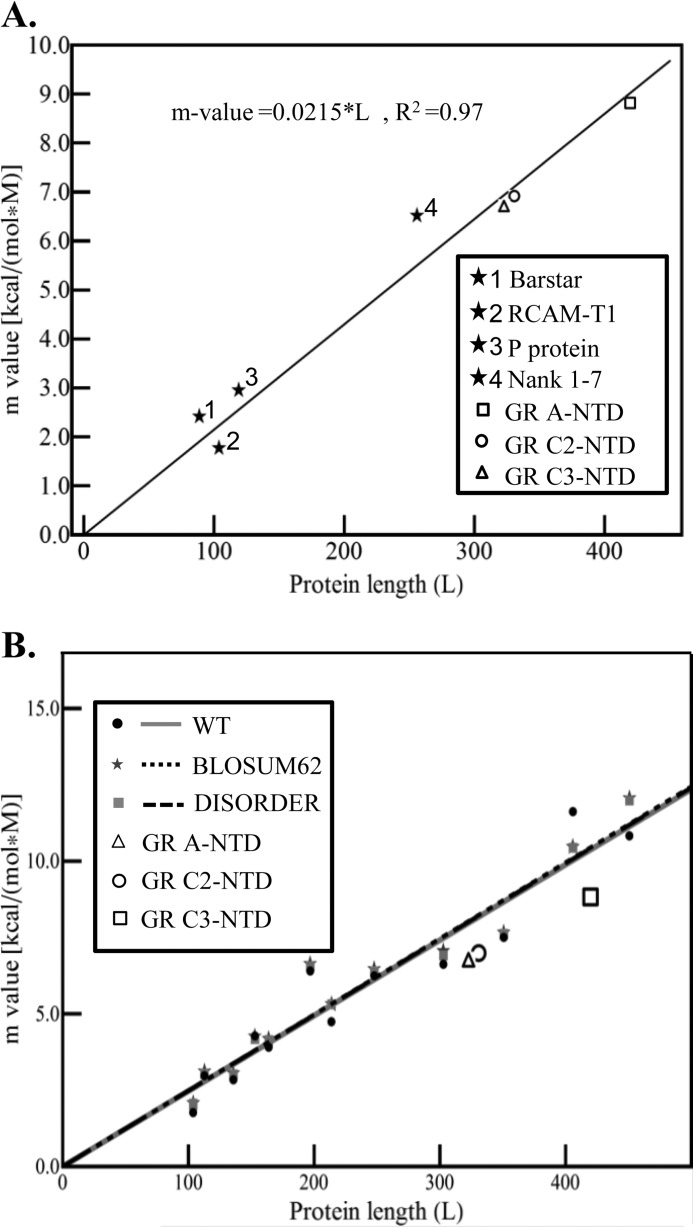FIGURE 4.
A, dependence of m-values on protein chain length (L) for TMAO-induced folding transitions. Shown are the m-values fitted from TMAO-induced two-state folding transitions for Barstar (closed star 1; Ref. 36), RCAM-T1 (closed star 2; Ref. 22), P protein (closed star 3; Ref. 37), Nank 1–7 (closed star 4; Ref. 38), GR A-NTD (open square), GR C2-NTD (open circle), and GR C3-NTD (open triangle). All seven data points can be fitted to a linear line; i.e. m-value = 0.0215 × L with a correlation coefficient of R2 = 0.97. This indicates that the TMAO-induced folding of GR A-NTD, GR C2-NTD, and GR C3-NTD followed the cooperatively two-state transition processes. In addition, the folded states of GR NTDs induced by TMAO are thermodynamically similar to globular proteins of similar length. B, dependence of calculated m-values on protein length (L) and sequence composition. WT sequences are depicted in black circles and can be fitted to the line m-value = 0.0247 × L (shown in gray) with a correlation coefficient of R2 = 0.98. BLOSUM62 (32)-mutated sequences are shown as dark gray stars and can be fitted to the line m-value = 0.0249 × L (shown in black short dash) with a correlation coefficient of R2 = 0.99. DISORDER-mutated sequences are shown as light gray boxes and can be fitted to the line m-value = 0.0248 × L (shown in black long dash) with a correlation coefficient of R2 = 0.99. All three fits have similar dependence on L. The absolute changes in slope are only minutely dependent on variations in sequence composition because although ∼25% of the m-value contribution comes from side chain contributions (with the remaining 75% coming from backbone contributions; supplemental Table S1) the relatively minor differences in amino acid usage between ID and globular proteins amount to only a small fraction of the computed m-value. For comparison, GR A-NTD, GR C2-NTD, and GR C3-NTD are depicted as the unfilled triangle, circle, and square, respectively.

